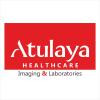Radiographer
20+ Radiographer Interview Questions and Answers

Asked in Apollo Hospitals

Q. Which catheter is used to perform a radial angiography procedure?
A radial angio procedure typically uses a radial catheter.
Radial catheter is specifically designed for radial artery access
It is smaller in size compared to femoral catheters
Radial catheter allows for better patient comfort and quicker recovery
Examples of radial catheters include Glidesheath Slender, PreludeEASE, etc.
Asked in Star Imaging

Q. What are short TE and long TE in MRI, and what are the uses of different TEs?
Spectro small te and large te refer to different echo times used in MRI spectroscopy to capture different types of tissue information.
Spectro small te is used to capture short T2 relaxation times, providing information on metabolites like lactate and lipids.
Spectro large te is used to capture long T2 relaxation times, providing information on metabolites like N-acetylaspartate and creatine.
Different TE values are used to selectively highlight different metabolites in the tiss...read more
Radiographer Interview Questions and Answers for Freshers
Asked in Meridian Nursing Home & Hospital

Q. What should the radiographer do?
The radiographer should perform diagnostic imaging procedures using X-rays or other imaging modalities.
Operate and maintain imaging equipment
Position patients correctly for imaging procedures
Follow safety protocols to protect patients and themselves from radiation exposure
Capture high-quality images for accurate diagnosis
Collaborate with radiologists and other healthcare professionals
Maintain patient records and ensure confidentiality
Continuously update knowledge and skills i...read more

Asked in Apollo Hospitals

Q. Which catheter is best for performing an LV Angio or Aortogram?
The best catheter for LV Angiography or Aortogram depends on the specific patient anatomy and clinical indication.
For LV Angiography, a pigtail catheter is commonly used to access the left ventricle and visualize the coronary arteries.
For Aortogram, a Judkins catheter or pigtail catheter can be used to access the aorta and visualize the aortic anatomy.
The choice of catheter also depends on the operator's preference and experience with different catheters.
It is important to co...read more

Asked in Apollo Hospitals

Q. Which catheter is used to perform femoral angiograms?
The catheter used for femoral angiograms is a femoral catheter.
Femoral catheter is specifically designed for accessing the femoral artery
It is longer and larger in diameter compared to other catheters
Common examples include Judkins Right (JR) catheter and Pigtail catheter
Asked in Nks Hospital

Q. Emergency Medicine With Patient Handling
Emergency medicine requires radiographers to handle patients with care and efficiency.
Radiographers must be trained in proper patient handling techniques to prevent injury to both the patient and themselves.
They must also be able to work quickly and efficiently in emergency situations.
Radiographers should communicate effectively with other healthcare professionals to ensure the best possible care for the patient.
Examples of emergency situations include trauma cases, cardiac a...read more
Radiographer Jobs



Asked in SKIMS Medical College

Q. What is the basic principle of a CT scan?
CT scan uses X-rays to create detailed cross-sectional images of the body.
CT scan stands for computed tomography scan
It uses a rotating X-ray machine to capture multiple images from different angles
The images are processed by a computer to create detailed cross-sectional images of the body
CT scans are commonly used to diagnose conditions such as tumors, fractures, and internal injuries

Asked in Vibrant Ndt Services

Q. What are the mechanical properties of materials?
Mechanical properties define how materials respond to forces, including elasticity, strength, and ductility.
Elasticity: Ability to return to original shape after deformation (e.g., rubber bands).
Strength: Resistance to deformation or failure (e.g., steel's high tensile strength).
Ductility: Ability to deform under tensile stress (e.g., copper can be drawn into wires).
Hardness: Resistance to surface deformation (e.g., diamond is extremely hard).
Toughness: Ability to absorb ener...read more
Share interview questions and help millions of jobseekers 🌟


Asked in Vibrant Ndt Services

Q. What are the properties of structural materials?
Structural materials possess key properties like strength, durability, and elasticity, essential for construction and engineering applications.
Strength: Ability to withstand applied forces without failure (e.g., steel in buildings).
Durability: Resistance to wear, decay, and environmental factors (e.g., concrete in bridges).
Elasticity: Ability to return to original shape after deformation (e.g., rubber in shock absorbers).
Thermal Conductivity: Ability to conduct heat (e.g., me...read more

Asked in Kailash Hospital

Q. What is your approach to patient care?
Patient care is of utmost importance in radiography.
Ensuring patient comfort and safety during procedures.
Communicating effectively with patients to alleviate anxiety.
Adhering to infection control protocols to prevent cross-contamination.
Providing clear instructions for pre- and post-procedure care.
Maintaining patient confidentiality and privacy.
Monitoring patients for any adverse reactions or complications.
Collaborating with other healthcare professionals to ensure comprehen...read more

Q. How do you deal with patients?
To deal with patients as a radiographer, it is important to be empathetic, communicate effectively, and ensure their comfort and safety.
Show empathy and understanding towards the patient's concerns and fears.
Communicate clearly and effectively, explaining the procedure and addressing any questions or doubts.
Ensure the patient's comfort and safety by providing clear instructions and positioning them correctly.
Maintain a professional and caring demeanor throughout the interacti...read more

Asked in Apollo Hospitals

Q. Which wire is normally used for CAG?
The normal used wire for CAG is a 0.035 inch J-tip guidewire.
The normal used wire for CAG is typically a 0.035 inch J-tip guidewire
This type of wire is commonly used for coronary angiography procedures
It is important to ensure the wire is compatible with the catheter being used

Asked in AIIMS

Q. What do you know about radiology?
Radiology is a branch of medicine that uses imaging technology to diagnose and treat diseases and injuries.
Radiology involves the use of various imaging techniques such as X-rays, CT scans, MRI, and ultrasound.
Radiographers are trained professionals who operate imaging equipment and work closely with radiologists to interpret images.
Radiology plays a crucial role in diagnosing conditions such as fractures, tumors, and internal injuries.
Advancements in radiology technology hav...read more
Asked in Star Imaging

Q. Do you perform CT scans of coronary angiography?
Yes, as a Radiographer, I am trained to perform CT scans of Angiography coronary angio.
I am proficient in operating CT scan machines for angiography procedures.
I have experience in positioning patients correctly for coronary angiography scans.
I am knowledgeable about the specific protocols and techniques required for this type of scan.
Asked in Nks Hospital

Q. Special Procedure With Contrast Study
Special procedures with contrast study involve using contrast agents to enhance imaging results.
Contrast agents can be administered orally, intravenously, or through injection.
Common contrast studies include CT scans, MRI scans, and angiograms.
Radiographers must ensure patients are not allergic to contrast agents before administering them.
Patients may experience side effects such as nausea, dizziness, or allergic reactions.
Radiographers must monitor patients closely during an...read more

Asked in Apollo Hospitals

Q. Which sheath is suitable for PTCA?
The suitable sheath for PTCA is a guiding catheter.
Guiding catheter is commonly used for PTCA procedures
It provides support and access for other devices such as balloons and stents
Different sizes and shapes of guiding catheters are available for various patient anatomies
Asked in Star Imaging

Q. Are there different types of MRI scans?
Yes, MRI scans can differ based on the specific type of scan being performed.
Different MRI scans include T1-weighted, T2-weighted, diffusion-weighted, and functional MRI.
Each type of MRI scan provides different information about the body's tissues and functions.
For example, a T1-weighted MRI is good for visualizing anatomy, while a diffusion-weighted MRI is used to assess tissue microstructure.
Asked in SKIMS Medical College

Q. Define the term ALARA in medical imaging?
ALARA stands for As Low As Reasonably Achievable, a principle in medical imaging to minimize radiation exposure to patients and staff.
ALARA is a radiation safety principle used in medical imaging to minimize radiation exposure to patients and staff.
It involves using the lowest possible radiation dose necessary to produce high-quality images for accurate diagnosis.
Techniques such as collimation, shielding, and proper positioning are used to adhere to ALARA principles.
Regularly...read more

Asked in Apollo Hospitals

Q. Which wire with a diameter of 0.014 inches is suitable for PTCA?
The suitable wire for PTCA 0.014 is typically a 0.014 inch guidewire.
A suitable wire for PTCA 0.014 is typically a 0.014 inch guidewire.
Guidewires with a diameter of 0.014 inches are commonly used in percutaneous transluminal coronary angioplasty (PTCA) procedures.
Examples of suitable wires include the BMW Universal 0.014 guidewire and the Runthrough NS 0.014 guidewire.


Q. What is sky line view
Skyline view is a radiographic projection used to visualize the upper surface of a structure.
It is commonly used to visualize the patella and the femoral condyles in the knee joint.
It is also used to visualize the acromion process in the shoulder joint.
The patient is positioned with their back against the image receptor and their knee or shoulder flexed at a 90-degree angle.
The x-ray beam is directed perpendicular to the joint being imaged from a superior to inferior angle.
Th...read more

Q. Describe the Triphasic Abdomen study.
Triphasic Abdomen study is a specialized imaging technique used to evaluate the blood flow in the liver and surrounding organs.
It involves three phases: arterial, portal venous, and delayed phases.
The arterial phase captures the early arterial blood supply to the liver, showing enhancement of lesions like hepatocellular carcinoma.
The portal venous phase highlights the portal vein and hepatic veins, aiding in the detection of liver metastases.
The delayed phase provides additio...read more

Q. What is a CT number?
CT number is a quantitative measurement used in computed tomography (CT) imaging to represent the radiodensity of tissues.
CT number is a unitless value assigned to each pixel in a CT image, representing the attenuation of X-rays by the tissue at that location.
It is calculated based on the linear attenuation coefficient of the tissue and the attenuation of the X-ray beam.
CT number is used to differentiate between different tissues based on their radiodensity, helping in diagno...read more
Asked in Star Imaging

Q. Brachial Nerves in details
Brachial nerves are a group of nerves that originate from the brachial plexus and innervate the upper limb.
Brachial nerves include the musculocutaneous, median, ulnar, axillary, and radial nerves.
They provide motor and sensory innervation to the muscles and skin of the upper limb.
Injury to the brachial nerves can result in conditions like carpal tunnel syndrome or radial nerve palsy.
Interview Questions of Similar Designations
Interview Experiences of Popular Companies






Calculate your in-hand salary
Confused about how your in-hand salary is calculated? Enter your annual salary (CTC) and get your in-hand salary


Reviews
Interviews
Salaries
Users










